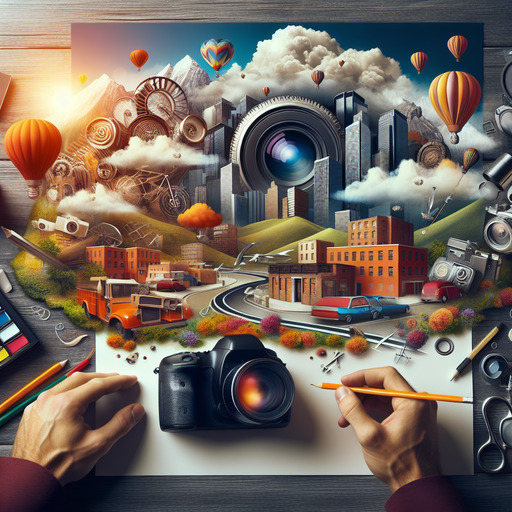
-
Table of Contents
- Mastering Photography: Tips and Techniques for Stunning Shots
- Understanding the Basics of Photography
- Why Mastering the Basics Matters
- Advanced Photography Techniques
- Portrait Photography: Capturing Emotions
- Landscape Photography: Capturing Nature’s Beauty
- Editing: Bringing Your Photos to Life
- Photography Editing Techniques
- Choosing the Right Photography Gear
- Investing in Quality Equipment
- Building a Photography Business
- Turning Passion into Profession
- Conclusion
- Questions and Answers
Mastering Photography: Tips and Techniques for Stunning Shots
Photography is more than just capturing moments; it’s about telling stories through images. Whether you’re a budding photographer or a seasoned professional, understanding the nuances of photography can elevate your work to new heights. In this guide, we’ll explore essential photography tips, techniques, and insights to help you capture breathtaking images.
Understanding the Basics of Photography
Why Mastering the Basics Matters
Before diving into advanced techniques, it’s crucial to have a solid grasp of the fundamentals. Mastering the basics ensures that you have a strong foundation to build upon, allowing for more creative freedom.
- Exposure: Learn the relationship between aperture, shutter speed, and ISO to control the light in your images.
- Composition: Use the rule of thirds, leading lines, and framing to create visually appealing photos.
- Focus: Understand depth of field and how to use it to emphasize your subject.
Advanced Photography Techniques
Portrait Photography: Capturing Emotions
Portrait photography is about capturing the essence of a person. To achieve this, consider the following techniques:
- Lighting: Use natural light or soft diffused lighting to highlight your subject’s features.
- Posing: Guide your subject into natural poses that reflect their personality.
- Background: Choose a background that complements the subject without distracting from them.
For instance, renowned photographer Annie Leibovitz often uses simple backgrounds to focus attention on her subjects’ expressions and emotions.
Landscape Photography: Capturing Nature’s Beauty
Landscape photography requires patience and an eye for detail. Here are some tips to enhance your landscape shots:
- Golden Hour: Shoot during the golden hour for soft, warm lighting that enhances natural beauty.
- Perspective: Experiment with different angles and perspectives to add depth to your images.
- Filters: Use polarizing filters to reduce glare and enhance colors.
Consider the work of Ansel Adams, who used black and white photography to highlight the textures and contrasts in landscapes.
Editing: Bringing Your Photos to Life
Photography Editing Techniques
Editing is an essential part of the photography process. It allows you to enhance your images and correct any imperfections.
- Software: Use tools like Adobe Lightroom or Photoshop for professional editing.
- Color Correction: Adjust the white balance and saturation to achieve the desired mood.
- Retouching: Remove blemishes and enhance details for a polished look.
For example, many photographers use Lightroom presets to maintain a consistent style across their portfolio.
Choosing the Right Photography Gear
Investing in Quality Equipment
While skill is paramount, having the right gear can significantly impact your photography. Consider the following when selecting equipment:
- Cameras: Choose a camera that suits your style, whether it’s a DSLR, mirrorless, or compact camera.
- Lenses: Invest in lenses that offer versatility, such as a 50mm for portraits or a wide-angle for landscapes.
- Accessories: Use tripods, reflectors, and external flashes to enhance your photography.
Photographer Chase Jarvis emphasizes that the best camera is the one you have with you, highlighting the importance of being prepared to capture moments.
Building a Photography Business
Turning Passion into Profession
For those looking to turn their passion into a career, building a photography business requires dedication and strategy.
- Portfolio: Create a diverse portfolio that showcases your best work and unique style.
- Networking: Connect with other professionals and potential clients through social media and photography events.
- Marketing: Use online platforms and word-of-mouth to promote your services.
Consider the success story of Jasmine Star, who built a thriving wedding photography business through strategic branding and marketing.
Conclusion
Photography is a journey of continuous learning and exploration. By mastering the basics, experimenting with advanced techniques, and investing in the right gear, you can capture stunning images that tell compelling stories. Whether you’re pursuing photography as a hobby or a profession, these insights will guide you toward success.
For more information on photography techniques and tips, visit Wikipedia’s Photography Page.
Questions and Answers
Q1: What is the best time of day for landscape photography?
A1: The best time for landscape photography is during the golden hour, which occurs shortly after sunrise and before sunset. The soft, warm lighting during this time enhances natural beauty and adds depth to your images.
Q2: How can I improve my portrait photography skills?
A2: To improve your portrait photography, focus on lighting, posing, and background selection. Use natural or diffused lighting, guide your subject into natural poses, and choose a background that complements the subject without distracting from them.
Q3: What editing software is recommended for beginners?
A3: Adobe Lightroom is highly recommended for beginners due to its user-friendly interface and powerful editing tools. It allows you to make basic adjustments and apply presets for consistent styling.
If you’re interested in learning more about our photography services or have any questions, please reach out to us via our contact page.